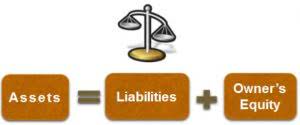Replica watches embody the fusion of style and precision, they are perfect cheap replica watches.
The best Rolex replica watches available here, buy and wear these luxurious replica watches.
You can find hublot replica watch items such as mechanical wristwatch, mechanical watches and watches top in AliExpress easily.

(8) Total materials equals the sum of the materials in the three groups.
- Coca-cola is a carbonated drink bottling company that specializes in unique flavors.
- The sticks are dried, and then sent to the packaging department, where the sticks are embossed with the Rock City Percussion logo, inspected, paired, packaged, and shipped to retail outlets such as Guitar Center.
- Process costing is the only reasonable approach to determining product costs in many industries.
- Examples of this include the manufacture of erasers, chemicals or processed food.
- Period costs are expensed during the period in which they are incurred; this allows a company to apply the administrative and other expenses shown on the income statement to the same period in which the company earns income.
- Process costing is a type of operation costing which is used to ascertain the cost of a product at each process or stage of manufacture.
First, they start from the Designing and Cutting department where shoes are designed to fit with the trending market, and fabric will be cut to fit with each design. In March 200X, the Design and Cutting department incur the cost of direct material USD 100,000, direct labor cost of USD 150,000 and USD 80,000 of overhead cost. During month, this department has finished 10,000 pairs of shoes and passes them to next stage. With processing, it is difficult to establish how much of each material, and exactly how much time is in each unit of finished product. This will require the use of the equivalent unit computation, and management selects the method (weighted average or FIFO) that best fits their information system. Prior to the new year, a company computes the estimates of the annual overhead per department divided by the estimated driver for that department.
Who Makes Use of Process Costing?
Under cost allocation methods, management accountants determine the cost of operating each individual function used in the production process. The total process cost is divided by the number of items produced during each specific function. The dollar amount resulting from this calculation is allocated to each good produced by the process. Often, process costing makes sense if the individual costs or values of each unit are not significant.

In a process costing system, there are three different ways to calculate costs. This can be done either using the weighted average method, standard costing method, or the first-in-first-out (FIFO) method. It is usually good accounting practice to carefully select the process costing method that best meets a business’s needs. In a process costing system, an item cost is determined by tracking the cost of each stage in the production process, rather than tracking the costs for each individual item.
Comparing Job And Process Costing
In the first stage of production, Coca-Cola
mixes direct materials—water, refined sugar, and secret
ingredients—to make the liquid for its beverages. The second stage
includes filling cleaned and sanitized bottles before placing a cap
on each bottle. In the third stage, filled bottles are inspected,
labeled, and packaged. Goals of process costing are to determine a manufacturing department’s cost of finished goods during a month and the cost of work in process at the end of that month.
The company assumes that each product requires the same overhead cost. Moreover, raw material needs to pass through multiple stages of production before turning into finished goods. And it is very complicated to assign the overhead cost individual unit. The typical manner in which costs flow in process costing is that direct material costs are added at the beginning of the process, while all other costs (both direct labor and overhead) are gradually added over the course of the production process.
What is Process Costing?
Alternatively, process costing that is based on standard costs is required for costing systems that use standard costs. In general, the simplest costing approach is the weighted average method, with FIFO costing being the most difficult. Each department performs a different function and can be considered its own little business or mini-factory. As such, each department adds its own direct materials, direct labor, and factory overhead costs. These three costs accumulate in a departmental account called Work in Process – Department Name, which is like the “tab” of the manufactured item.
- Examples of these types of companies include food manufacturers, bottling companies, printing companies, and other similar businesses.
- Process costing is used when large quantities of identical items are manufactured in a continuous flow on a first-in, first-out basis.
- It yields a cost of goods manufactured (COGM) figure, which is frequently displayed on your company’s income statement.
- The cost accounting methodology used for this scenario is process costing.
- The sticks are dried, and then sent to the packaging department, where the sticks are embossed with the Rock City Percussion logo, inspected, paired, packaged, and shipped to retail outlets such as Guitar Center.
A job costing system is
used by companies that produce unique products or jobs. Process
costing systems track costs by processing department, whereas job
costing systems track costs by job. Job order costing tracks prime costs to assign direct material and direct labor to individual products process costing examples (jobs). Process costing also tracks prime costs to assign direct material and direct labor to each production department (batch). Manufacturing overhead is another cost of production, and it is applied to products (job order) or departments (process) based on an appropriate activity base.
